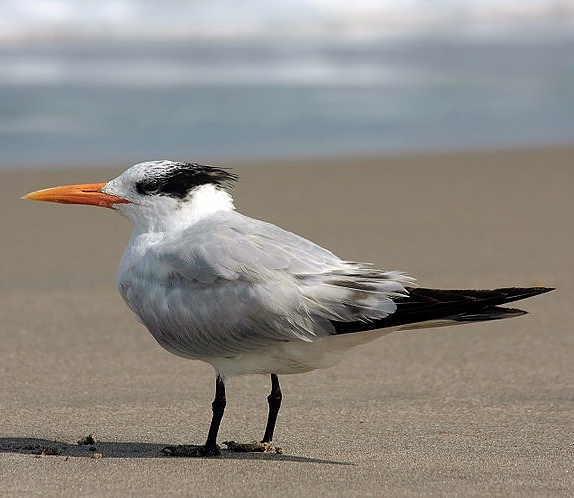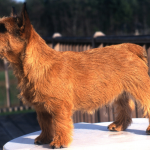Royal tern

 |
| Photo by Ianaré Sévi (Wikipedia) |
Common name:
royal tern (en); garajau-real (pt); sterne royale (fr); charrán real (es); königsseeschwalbe (de)
Taxonomy:
Order Charadriiformes
Family Sternidae
Range:
This species breeds along the coasts of West Africa, from Mauritania to Cameroon, along the Caribbean and the coasts of South America from Colombia no northern Brazil, and along the coasts of south-eastern Brazil, Uruguay and north-eastern Argentina. There is also a breeding population in the eastern United States along the coasts from North Carolina to Massachusetts Outside the breeding season they wander from Morocco to Angola, along Central America and the Gulf of Mexico, and also along the Pacific coast from Guatemala to northern Chile.
Size:
These birds are 42-50 cm long and have a wingspan of 125-135 cm. They weigh 350-450 g.
Habitat:
The royal tern is found in inshore waters, bays, lagoons, harbours, estuaries, saltmarshes, mudflats, sandflats and mangroves, preferring barren sandy beaches and coral islands to breed. They are only found in coastal areas, up to an altitude of 100 m.
Diet:
They mainly hunt on salt water, feeding on small fish, squids, shrimps and crabs.
Breeding:
Royal terns can breed all years round, varying between different parts of their range. They nest in large, dense colonies of up to several thousands of pairs, often in association with other terns and small gulls. They are monogamous and both sexes help build the nest, a shallow scrape on bare ground placed near the high tide line. There the female lays 1-2 eggs which are incubated by both sexes for 25-31 days. The chick may remain in the nest for up to 1 week, but eventually leaves to join the other chicks of the colony in a large crèche. While in the crèche they continue to be fed by their parents. They remain in the crèche until fledging, 28-35 days after hatching, but continue to rely on their parents for food and protection for 5-8 months.
Conservation:
IUCN status – LC (Least Concern)
This species has a large breeding range and the overall population trend is believed to be stable, although some population have an unknown trend and the population in North America have undergone a small increase over the last 4 decades.
































